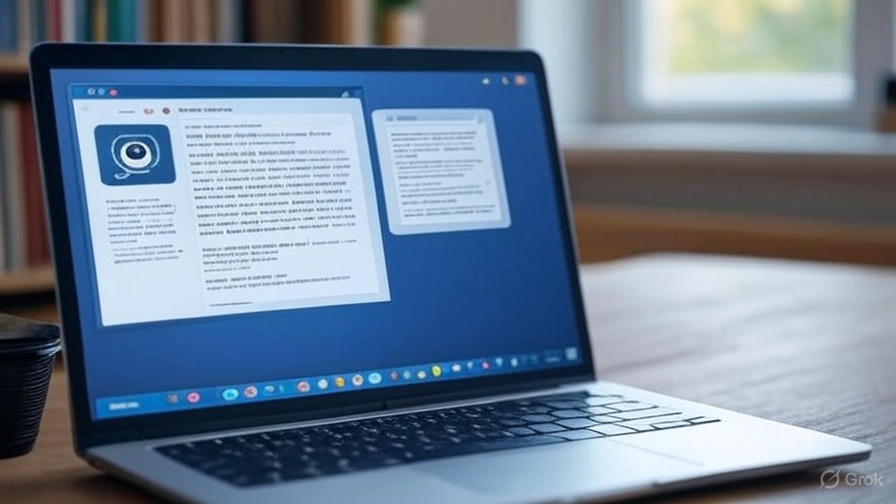Introduction
In today’s fast-moving business world, information is everywhere. A lot of it comes in the form of images—like scanned contracts, printed invoices, receipts, ID cards, or even handwritten notes. The problem is that images are not always easy to edit, search, or organize. That’s where image-to-text conversion comes in.
With the help of OCR (Optical Character Recognition) technology, businesses can quickly turn any image into readable and editable text. This simple step can save time, reduce errors, and make information easier to manage.
In this article, we’ll explore the 5 big benefits of using image-to-text conversion in business documents. By the end, you’ll understand why it’s becoming an essential tool for companies of all sizes.
What Is Image-to-Text Conversion?
Before jumping into the benefits, let’s keep it simple.
Image-to-text conversion means taking text that appears in an image (like a photo, scanned page, or PDF) and turning it into actual digital text. This is usually done using OCR software.
For example:
- You scan a paper contract and save it as a PDF. Normally, the PDF is just an image, and you can’t copy the text or search inside it.
- With OCR, that scanned page becomes a real text document. Now you can copy, edit, and search the content just like any Word file.
It’s like magic, but in reality, it’s smart technology doing the work for you.
Why Businesses Need Image-to-Text Conversion
Almost every business deals with documents—contracts, invoices, employee files, receipts, customer forms, or reports. Many of these documents still come in paper form or as scanned images, which makes handling them tricky.
- Searching through a pile of images is time-consuming.
- Editing scanned files is almost impossible without OCR.
- Storing only image files can take up space and create confusion.
By converting images to text, businesses can work smarter, not harder. Now let’s go through the five biggest benefits.
1. Saves Time and Increases Productivity
Time is money in business. Imagine you have to find a single word in a stack of scanned PDFs. Without OCR, you’d need to open each file, zoom in, and manually check line by line. That could take hours.
With image-to-text conversion:
- You can search documents instantly using keywords.
- Employees spend less time doing manual work.
- Teams can focus on important tasks instead of wasting hours on data entry.
For example, if a finance team needs to find “invoice #1025,” they can simply type it in the search bar instead of flipping through dozens of scanned receipts. This saves hours every week, boosting overall productivity.
2. Improves Accuracy and Reduces Human Errors
Manual data entry is not only slow but also prone to mistakes. A single typo in a contract, customer record, or invoice can cause serious problems—like payment delays or legal issues.
By using OCR for image-to-text conversion:
- The risk of typing errors goes down.
- Information stays consistent across all documents.
- Businesses can trust that the data is correct.
For example, instead of an employee typing numbers from a scanned invoice, OCR captures them accurately in seconds. This not only ensures better accuracy but also gives peace of mind to managers and clients.
3. Makes Documents Easy to Search and Organize
Think about how easy it is to find something on Google. Now imagine if your company’s documents worked the same way.
That’s exactly what image-to-text conversion offers:
- You can search through thousands of pages in seconds.
- You can tag or categorize documents by keywords.
- You can retrieve files quickly without wasting time.
For instance, a law firm can scan hundreds of old contracts, convert them to text, and store them in a searchable database. The next time they need to find a specific clause, it’s just a few clicks away.
This benefit alone can transform the way companies handle their documents.
4. Saves Storage Space and Cuts Costs
Storing only image-based files or paper copies can get messy and expensive.
- Paper takes up physical office space.
- Image files are often larger in size compared to text files.
- Searching and managing these files wastes time, which costs money.
By converting images to text:
- Businesses can digitize and compress files, saving storage space.
- Cloud-based storage becomes more effective since searchable text files take less space.
- The company saves money on printing, filing cabinets, and storage rooms.
Over time, this doesn’t just free up space—it reduces operating costs.
5. Improves Accessibility and Collaboration
In today’s remote and hybrid work environments, teams need to access documents from anywhere. Image-to-text conversion makes this easier.
- Employees can open and edit files from laptops, tablets, or phones.
- Teams can share searchable PDFs and documents with each other.
- Visually impaired employees can use screen readers to read the text extracted from images.
This creates a more collaborative and inclusive workplace. For example, a marketing team working across different locations can easily share and edit scanned reports once they’re converted to text. No more emailing large image files back and forth.
Real-Life Examples of Businesses Using Image-to-Text
To make things even clearer, let’s look at a few real-world examples:
- Healthcare – Hospitals scan patient records and use OCR so doctors can quickly search medical histories.
- Finance – Banks scan checks and invoices to process them faster with fewer errors.
- Legal Firms – Lawyers convert old case files into text for easy search and referencing.
- Retail – Stores scan receipts and delivery notes to track expenses and inventory.
- Education – Schools and universities digitize old books and notes, making them searchable for research.
No matter the industry, the benefits are the same: time saved, errors reduced, and efficiency improved.
Choosing the Right Image-to-Text Tool
Not all OCR tools are the same. If your business wants to use image-to-text conversion, here are some things to consider:
- Accuracy – Choose software that handles different fonts, handwriting, and languages well.
- Speed – Make sure it can process large batches of files quickly.
- Integration – It should work smoothly with your existing software (like Google Drive, MS Office, or CRM tools).
- Security – Business documents are sensitive, so look for tools that keep data safe.
- Cost – Compare free and paid options depending on your company’s needs.
Some popular OCR tools include Adobe Acrobat, Google Drive OCR, ABBYY FineReader, and online services like Smallpdf or OnlineOCR.
Future of Image-to-Text Conversion in Business
The future looks promising. With AI-powered OCR, accuracy is getting better every year. Soon, these tools may not just convert text but also understand context, making it easier to analyze contracts, receipts, or legal papers automatically.
As businesses continue moving toward paperless operations, image-to-text conversion will play a key role in making workplaces faster, smarter, and more organized.
Final Thoughts
To sum it up, here are the 5 benefits of using image-to-text conversion in business documents:
- Saves time and increases productivity.
- Improves accuracy and reduces human errors.
- Makes documents easy to search and organize.
- Saves storage space and cuts costs.
- Improves accessibility and collaboration.
In simple words, image-to-text conversion helps businesses work faster, smarter, and with fewer mistakes. It turns piles of scanned papers and images into useful, searchable, and editable information.








